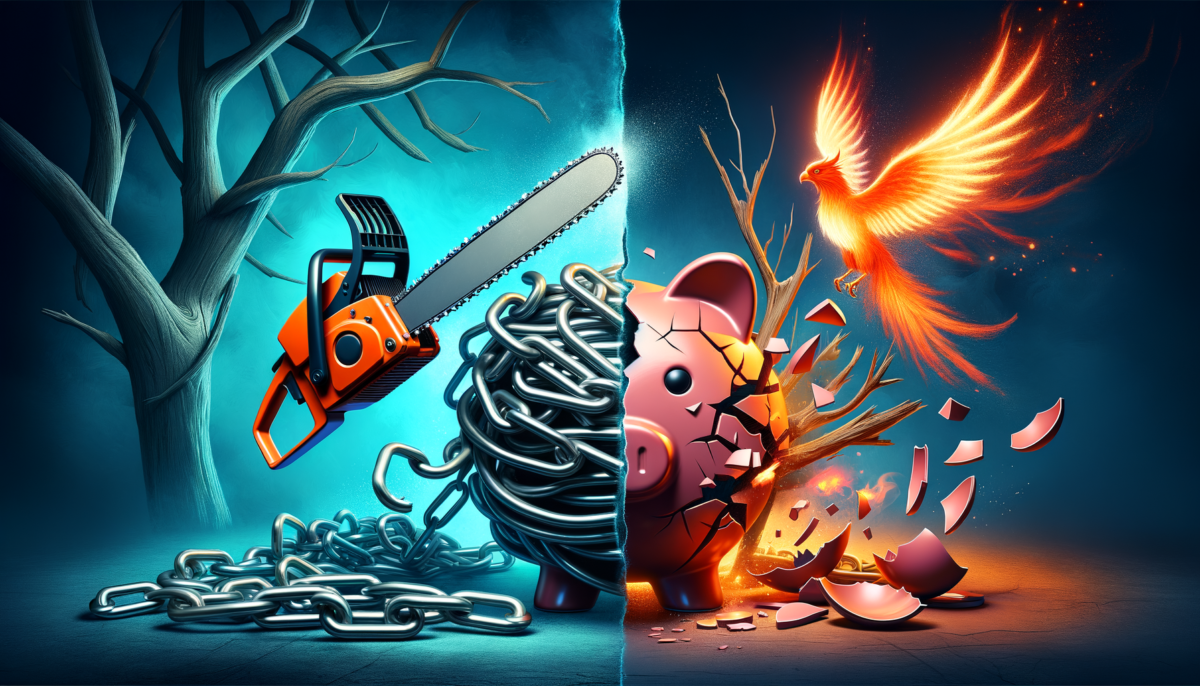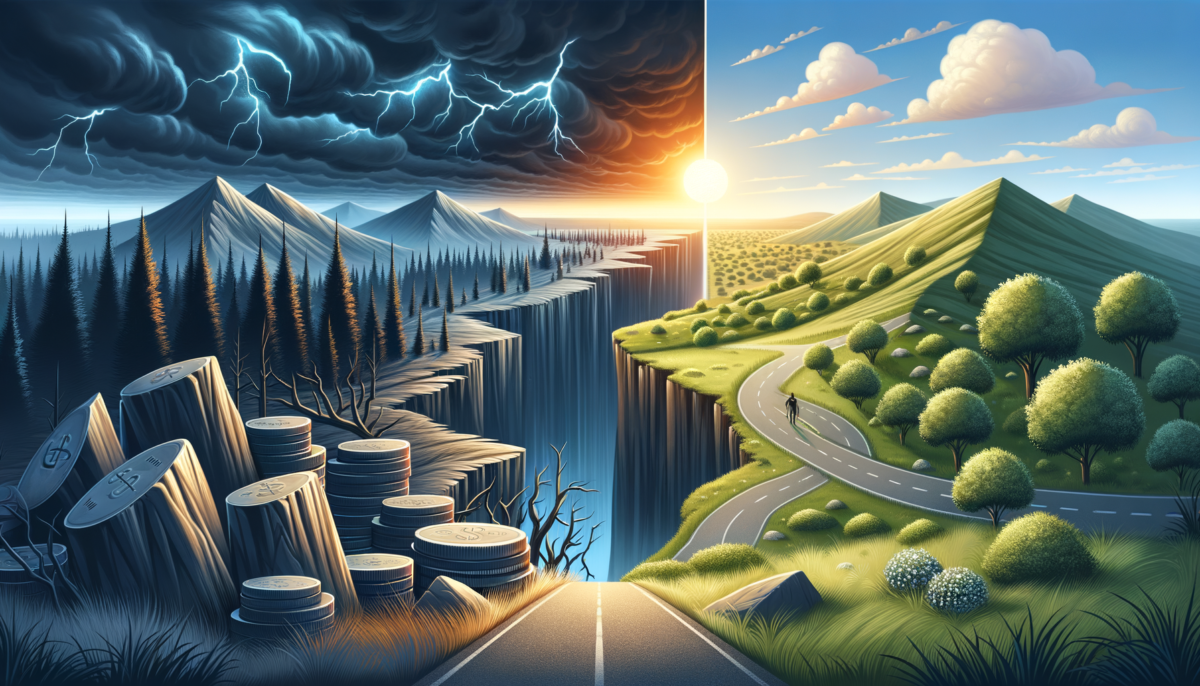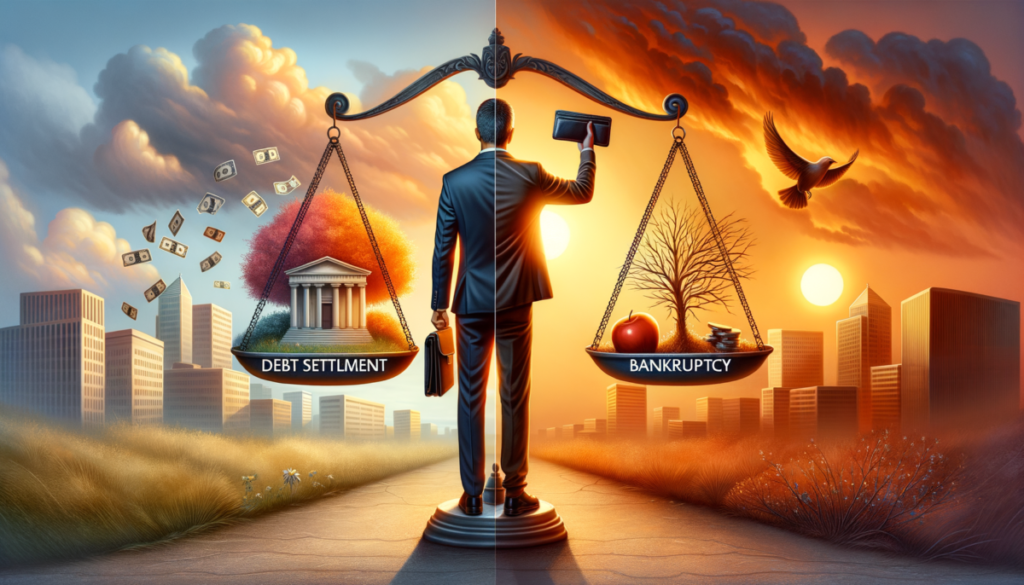Section 1: Overview of Debt Settlement and Bankruptcy
Debt Settlement through Pacific Debt Relief
- Process and Benefits: Pacific Debt Relief works by talking to the people you owe money to and tries to get them to agree to let you pay less than what you owe. They aim to help you get rid of your debt in 24-48 months. Pacific Debt Relief offers a way that might be easier and more flexible than other methods like debt counseling.
- Pros:
- Affordable option
- Talks with your creditors
- No new loans needed
- Quick results
- Help from professionals
- Kept private
- Cons:
- May hurt your credit score
- Takes time
- Might have to stop paying creditors at first
- Must meet certain requirements
- Success can vary
Overview of Bankruptcy
- Types of Bankruptcy: There are two main kinds: Chapter 7 and Chapter 13. Chapter 7 gets rid of most of your debts quickly, while Chapter 13 arranges a payment plan over time. Both have specific rules on who can use them.
- Pros:
- Stops the people you owe from bothering you
- Forgives many debts
- Protects your stuff
- Offers a way to pay back over time
- Cons:
- Really bad for your credit score
- Must meet certain requirements
- Costs money and is complex
- Everyone can see you filed
- Can impact future goals
Key Differences Between Debt Settlement and Bankruptcy
- Private vs. Public Process: Debt settlement with Pacific Debt Relief is private, keeping your financial matters out of the public eye. Bankruptcy, however, is a court process that becomes a matter of public record.
- Impact on Credit Score: Both can damage your credit score, but bankruptcy often has a longer-lasting effect. Choosing between these options means considering the future of your credit health carefully.

Financial Impacts and Credit Consequences
Long-Term Financial Impacts of Debt Settlement
- Credit Score Recovery: After getting a debt settlement, your credit score might go down at first. But, unlike bankruptcy, it might be easier to fix your credit score faster once you’re done with the settlement. This means you might start seeing improvements in your credit within a couple of years rather than up to a decade with bankruptcy.
- Financial Stability: Choosing debt settlement can help you steer clear from the deep financial issues that come with bankruptcy. You might find it easier to get loans or credit cards in the future compared to if you had filed for bankruptcy. This could put you in a better spot for things like getting a house or car loan later.
Long-Term Financial Impacts of Bankruptcy
- Credit Score Damage: Filing for bankruptcy does a big number on your credit score. This damage can stick around for up to 10 years if you go for Chapter 7, or 7 years for Chapter 13. This makes things like getting a mortgage or even some jobs harder in the future.
- Future Financial Goals: If you’re thinking about big future plans like buying a home, or starting a big project, bankruptcy might slow you down. It can make lenders think twice before giving you a loan, and you might get higher interest rates when you do get a loan.
Cost Comparisons
- Debt Settlement Costs: Going with a debt relief plan might seem expensive at first because companies like Pacific Debt Relief usually charge a fee based on how much debt they’re dealing with for you. This fee often ranges between 15% to 25% of your total debt. Paying off $10,000 in debt? Your fee could be up to $2,500. But, this could still end up being less than the costs of bankruptcy, especially when you think about long-term effects on your finances.
- Bankruptcy Costs: Filing for bankruptcy isn’t cheap. You’ve got court fees, and more often than not, you’ll need a lawyer, which adds up quickly. The total can be thousands of dollars. Plus, the impact on your credit score and higher interest rates in the future can make bankruptcy much more costly in the long run.

Eligibility Requirements and Success Rates
Eligibility Requirements for Debt Settlement
- Unsecured Debt: Debt settlement is mainly for unsecured debt, like credit card bills or medical bills. If you have these types of debt, you might be able to get help.
- $10,000 Minimum: You generally need at least $10,000 in debt to start. If you have this much, or more, debt settlement could work for you.
- Financial Hardship: If you’re really struggling to pay your bills, debt settlement might be an option. Companies look for folks who can’t keep up with their payments.
Eligibility Requirements for Bankruptcy
- Means Test for Chapter 7: To clear your debts through Chapter 7, you have to pass a “means test.” This means they check if you make less money than the average person in your state. If you do, you might qualify.
- Regular Income for Chapter 13: For Chapter 13, you must have a regular paycheck. This way, you can pay back some of your debt over time.
- Debt Limits: There’s a maximum amount of debt allowed for Chapter 13. If your debt is too high, you might not qualify.
Success Rates of Both Options
- Debt Settlement: Success varies. Pacific Debt Relief has helped many people, but success depends on your situation and who you owe money to. Some folks see their debt cut down a lot, while others might not get as big of a break.
- Bankruptcy: If you file for Chapter 7, your chance of getting rid of your debt is pretty good. But for Chapter 13, it’s tougher because you have to stick with a payment plan for 3 to 5 years, and some people can’t finish it.
Choosing between debt settlement and bankruptcy really comes down to what kind of debt you have, how much money you’re making, and what you’re able to do moving forward. Bankruptcy Basics can give you a clearer picture of what to expect with each type of bankruptcy. Both options have big impacts on your credit score, so it’s key to think about which path will help you the most in the long run. Talking with a financial counselor or lawyer can help you figure out the best choice for you.

Decision-Making and Future Considerations
Key Considerations for Choosing Between Options
- Stable Income: If you have a stable income, you might lean towards Pacific Debt Relief. They can help you negotiate your debts down without needing to go through the court. But, if you’re looking for immediate relief and your debt is overwhelming, bankruptcy could provide a reset.
- Future Goals: Think about what you want in the future. Do you plan to buy a house or car? Your choice could affect those plans. Debt settlement might have a smaller impact on your ability to get loans in the future compared to bankruptcy.
Importance of Professional Advice
- Consulting a Licensed Attorney: Before making a decision, it’s smart to talk to someone who knows the ins and outs. A lawyer or financial advisor can help you understand your options and which one might work best for you. They can make sure you know about things like the Bankruptcy Basics and how each type of bankruptcy or debt settlement could impact your future.
Avoiding Common Pitfalls
- Understanding the Process: It’s important to know what you’re getting into. Both options can have big impacts on your credit and future. Make sure you fully understand each step, from how long it’ll take to how it could affect your ability to borrow money or buy a home in the future. Don’t rush into a decision without reviewing the eligibility requirements and potential outcomes.
Choosing between debt settlement with Pacific Debt Relief and filing for bankruptcy is a big decision. Your choice depends on your current financial situation, what you plan for your future, and what kind of impact you’re willing to accept on your credit. While debt settlement might be a less drastic option compared to bankruptcy, it’s not without its downsides. Bankruptcy offers a legal reset of certain debts but can deeply impact your credit and public image for years.
Everyone’s situation is unique. What works for one person might not be the best for another. That’s why getting professional advice is crucial. A lawyer or advisor can help you see the full picture, including long-term outcomes you might not have thought about. They can guide you through either process and help you avoid common mistakes that could make your financial situation harder down the line.
Remember, no matter which path you choose, there’s always a way forward. With the right plan and support, you can move towards a more secure financial future.



